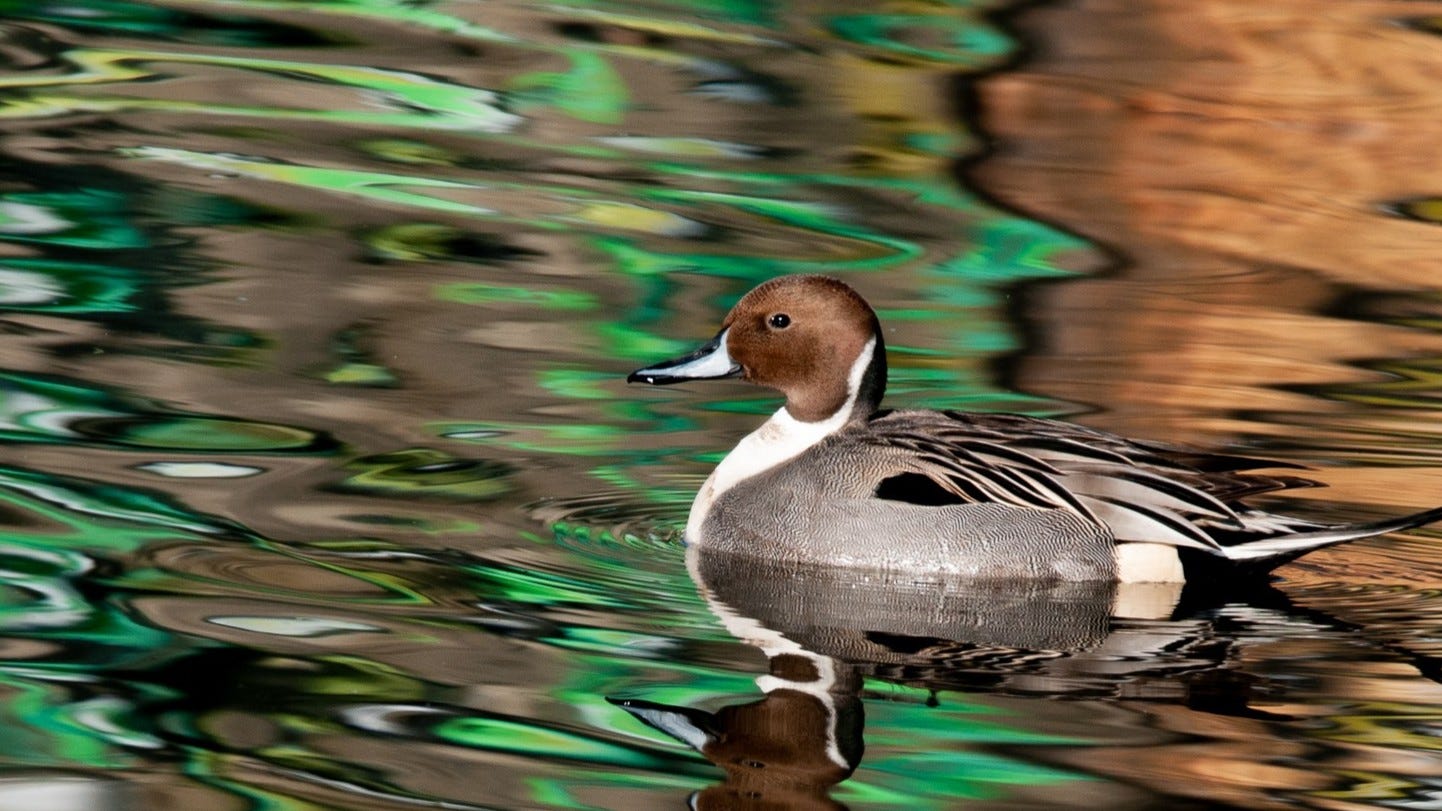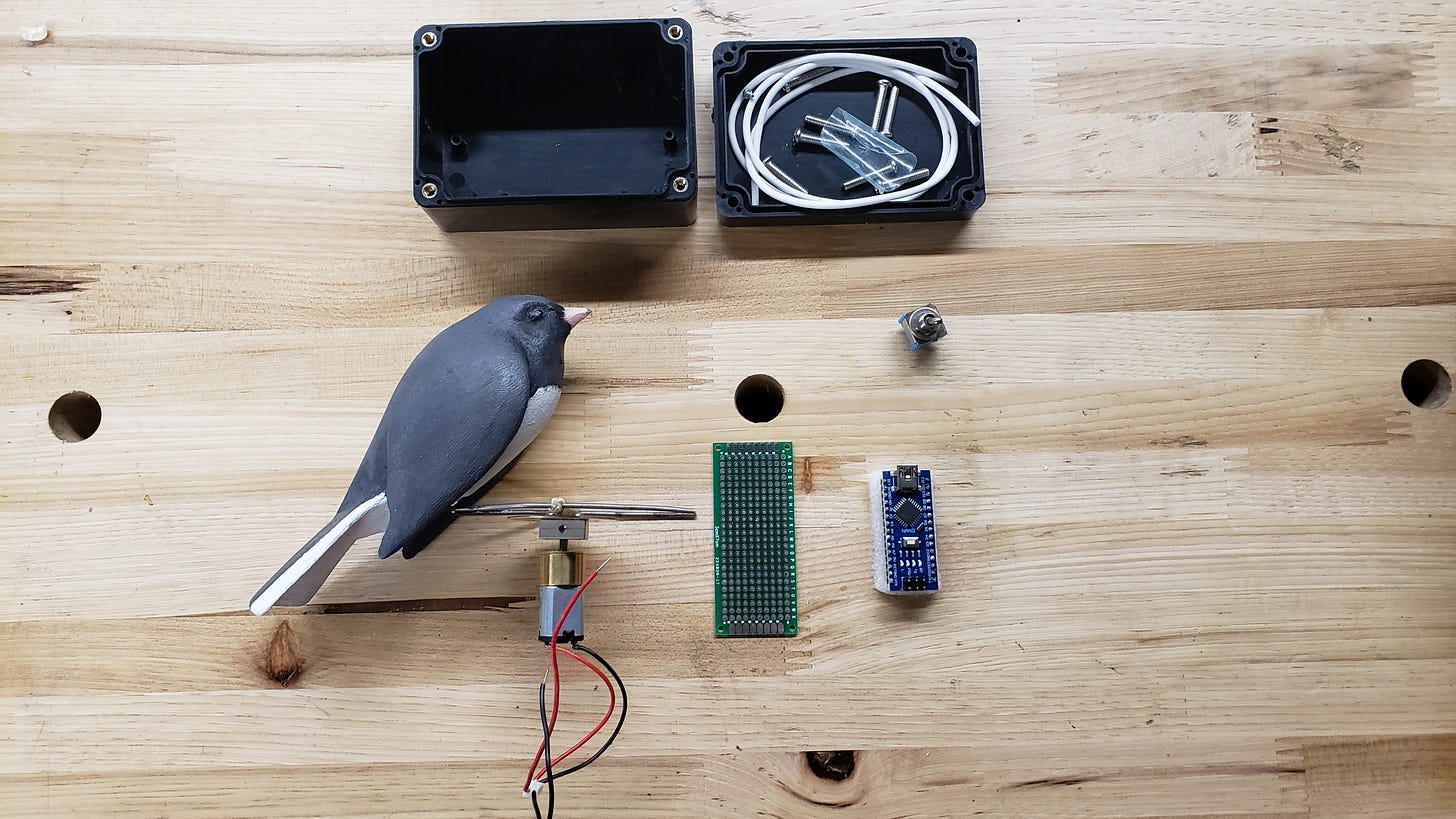This Week in Birding: The winter waterfowl preview edition
Mild temperatures mean open waters throughout the Upper Midwest. Many ducks are staying north—for now.
One thing the Chicago area has a lot of in winter is waterfowl. Ducks, geese and swans are generally plentiful—if you know where to look.
The weather’s been mild through fall and early winter this year. That means that large flights of winter waterfowl haven’t happened yet, as areas north of remain unfrozen. The lack of cold weather in places like Wisconsin means birds can stay there to forage.
“A lot of these diving ducks don’t come down unless they have to,” birder Al Stokie told me. “There aren’t many [Common] Goldeneye yet, or Common Mergansers.”
Al often shares reports from his birding trips on Illinois Birders Exchanging Thoughts, or IBET. He suggests a host of inland locations to look for waterfowl while the weather is mild. A few of those are places in the Palos area in the Southwest Suburbs. Others include quarry lakes like Lake Opeka in Des Plaines, where Al found a group of Black Scoters recently.
“When everything’s open like this, the places that I would go would be the Palos area,” Al says. “McGinnis Slough, Saganashkee Slough and several other places there. McGinnis Slough is probably the best spot in the area for puddle ducks. It’s pretty shallow in comparison with some of the other places.”
Puddle ducks, aka dabbling ducks, include pintail, shovelers and teal. Diving ducks include goldeneye, merganser, scaup and scoter. They’re generally found on lakes and big rivers. Saganashkee, a big lake on Cook County Forest Preserve property near the Cal-Sag Channel, is deeper and a little better for diving ducks, Al says.
Another factor is hunting season. One of Al’s favored locations is the Des Plaines River Wide Waters, a Southwest Suburban site where a vagrant Great Kiskadee has been seen. It’s a popular hunting locale at this time of year. The same with Wolf Lake along the Illinois-Indiana border (“you wouldn’t want to go in there,” Al says). Waterfowl hunting season generally ends by January, though.
The Chicago lakefront and places like Gillson Park in Wilmette, Waukegan Harbor and North Point Marina in Winthrop Harbor are reliable places for diving ducks. When inland waterways freeze, those sites become prime locales for birds and birders. Rivers with dams that keep water open become key locations inland.
“Anywhere there’s a dam is good for waterfowl and gulls,” Al says. “Around the Fox River in South Elgin or Elgin is one of the best places like that.”
One of the joys of birding is that there are interesting birds around throughout the year. And maybe that’s never been more important as we look ahead to this winter.
Introducing Doug the Junco
On Monday, I wrote about the study undertaken by my friend Haans Petruschke on the disjunct Dark-eyed Junco population in the steep ravines and gulches of northeast Ohio.
Haans and Mike Watson, a wildlife biologist with Holden Arboretum, worked to set up mist nets to capture and band the resident juncos starting in 2017. Haans fashioned a wooden junco decoy out of basswood to draw birds to the banding site. The decoy worked well at first but became less effective as the juncos learned it was inanimate.
“As they got wise to us, they realized this isn't another bird, this is just a decoy,” Haans said.
So earlier this year Haans, who’s an engineer, carved a new decoy, “Doug,” with droopy wings and a fanned tail to mimic a displaying male junco. He added an animation mechanism powered by a 9-volt cell so that Doug pivots back and forth. This brought the birds in toward the mist net.
“The movement and the spread tail seem to get the hormones really agitated in male birds,” Haans said. “They may take 15 minutes or longer but eventually they can't stand it and have to take a run at Doug.”
Here’s a video showing Doug in action in the shop and in the field:
Click here for step-by-step detail on how Doug was made.
Agriculture secretary choice is important for birds
When I was working on nutrition issues, I saw then-Secretary of Agriculture Tom Vilsack speak on several occasions. I grew to look forward to Vilsack’s speeches, as he was the Obama Administration’s go-to person on food issues and provided good insight into what was happening nationally. He also possessed a sort of folksy charm. To Vilsack, every child was a “youngster” who’d benefit from initiatives like the National School Milk Program. Not kid or student or child, it was always “youngster.”
Earlier this week news came across that President-elect Joe Biden has selected Vilsack to again serve as Secretary of Agriculture. What does this have to do with birding? The U.S. Department of Agriculture oversees a broad set of activities, including the National Forest Service, which encompasses 193 million acres, more than twice the size of the National Park system. It plays a critical role in decisions regarding lumber and mining interests in the forests. It also has some responsibility for wildlife (just check out what’s going on to help Sage Grouse) and even factored into the story locally of “Monty and Rose.” Technicians with USDA Animal Plant Health Inspection Service (APHIS) installed the game cameras that watched the Piping Plovers’ nest.
There are plenty of amazing birds to be found on National Forest land, and those areas are in need of extra protection after the last four years. Here is to hoping the Agriculture department will be in good hands with Secretary Vilsack, with the best interests of wildlife—and youngsters—at heart.
The World of Monty and Rose
“The World of Monty and Rose” is a limited edition hand-drawn map by New World Cartography in Green Pond, S.C. This watercolor map is printed on heavy bond paper, and dimensions are 17.8” wide by 10” tall. We have just a handful remaining. Order yours today and receive it in time for holiday gift giving.
Of Chicago, the Great Lakes and Piping Plovers
I wrote an essay that appeared on the Center for Humans and Nature’s City Creatures blog this week. One of the points I tried to make had to do with how two Piping Plovers and one parcel of land—Montrose Beach Dunes—offered a window for many people to become curious about these larger relationships that the city shares with its lakeshore. Perhaps Monty and Rose can help reframe the way we think about our lakefront.
TWiB Notes
This fall has been a good one for western hummingbirds in the Chicago area. A Rufous Hummingbird has been hanging out at a backyard feeder in Lisle during the past week…..The vagrant Great Kiskadee was still present near the Des Plaines Wide Waters as of yesterday…..I wrote about this year’s winter finch irruption two Mondays ago. Illinois Ornithological Society will host Illinois Ornithological Society will host a virtual event on Tuesday night featuring Matt Young, President of the Finch Research Network. He will cover everything from redpolls, to Evening Grosbeaks, to the distribution and ecology of different Red Crossbill flight calls.
Be part of a community of people who share your interest in birds. By becoming a paid subscriber, you join a community where making films like “Monty and Rose” is possible.





